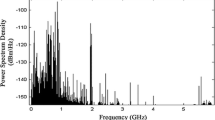We consider the problem of coordinated spatial signal processing at the base stations of modern high-throughput wireless cellular systems using orthogonal frequency division multiplexing (OFDM) and adaptive antenna arrays. In the existing OFDM systems with coordinated multi-point (CoMP) transmission, the user throughput gain is achieved via co-channel interference mitigation by means of coordinated transmit beamforming at the base stations. For such schemes, it is assumed that each base station transmitter is equipped with linear antenna array comprising a set of elements with the same vertical polarization. In this paper, a new approach to spatial coordination is studied using the joint coordination of the signal polarizations at the transmitting base stations whose antenna arrays are made of pairs of mutually orthogonal antenna elements. In this case, co-channel interference mitigation among the base stations is achieved via the adaptive choice of the signal polarization at each transmitting antenna array. An algorithm of coordinated spatial signal processing with polarization selection is proposed in this work and the system throughput is analyzed for the proposed CoMP scheme.
Similar content being viewed by others
References
A. V. Davydov and A. A. Mal’tsev, Radiophys. Quantum Electron., 54, No. 6, 430 (2011).
A. F. Molisch, M. V. Clark, H. Dai, et al., “Method and apparatus for reducing interference in multipleinput-multiple-output (MIMO) systems,” US Patent 7 912 014.
M. Sawahashi, Y.Kishiyama, A. Morimoto, et al., IEEE Wireless Communications, 17, No. 3, 26 (2010).
J. D. Gibson, The Mobile Communications Handbook, CRC Press, Boca Raton, Fl. (1999).
B. Johannisson and A. Derneryd, in: Proc. Antennas Applications Symp., 1999, p. 98.
P. Patcharamaneepakorn, S. Armour, and A. Doufexi, IEEE Commun. Lett., 16, No. 7, 1034 (2012).
3GPP TS 36.211. V10.3.0. Evolved universal terrestrial radio access (E-UTRA); Physical channels and modulation: Release 10, (2011), p. 103.
3GPP TR 36.814. V9.0.0. Evolved universal terrestrial radio access (E-UTRA); Further advancements for E-UTRA physical layer aspects: Release 9 (2010), p. 107.
3GPP TS 36.819. V11.1.0. Evolved universal terrestrial radio access (E-UTRA); Coordinated multipoint operation for LTE physical layer aspects: Release 11 (2011), p. 69.
Lau V. in: IEEE GLOBECOM’02, 2002, 763.
Author information
Authors and Affiliations
Corresponding author
Additional information
Translated from Izvestiya Vysshikh Uchebnykh Zavedenii, Radiofizika, Vol. 55, No. 8, pp. 586–598, August 2012.
Rights and permissions
About this article
Cite this article
Morozov, G.V., Davydov, A.V. & Mal’tsev, A.A. Coordinated spatial signal processing at base stations of the cellular communication systems with adaptive polarization choice. Radiophys Quantum El 55, 528–538 (2013). https://doi.org/10.1007/s11141-013-9389-1
Received:
Accepted:
Published:
Issue Date:
DOI: https://doi.org/10.1007/s11141-013-9389-1




